Complete Guide To Mulching: Everything You Need To Know
All gardens, whether they are flower or vegetable, benefit from the use of mulch. Learn more about best practices of mulching your garden beds.
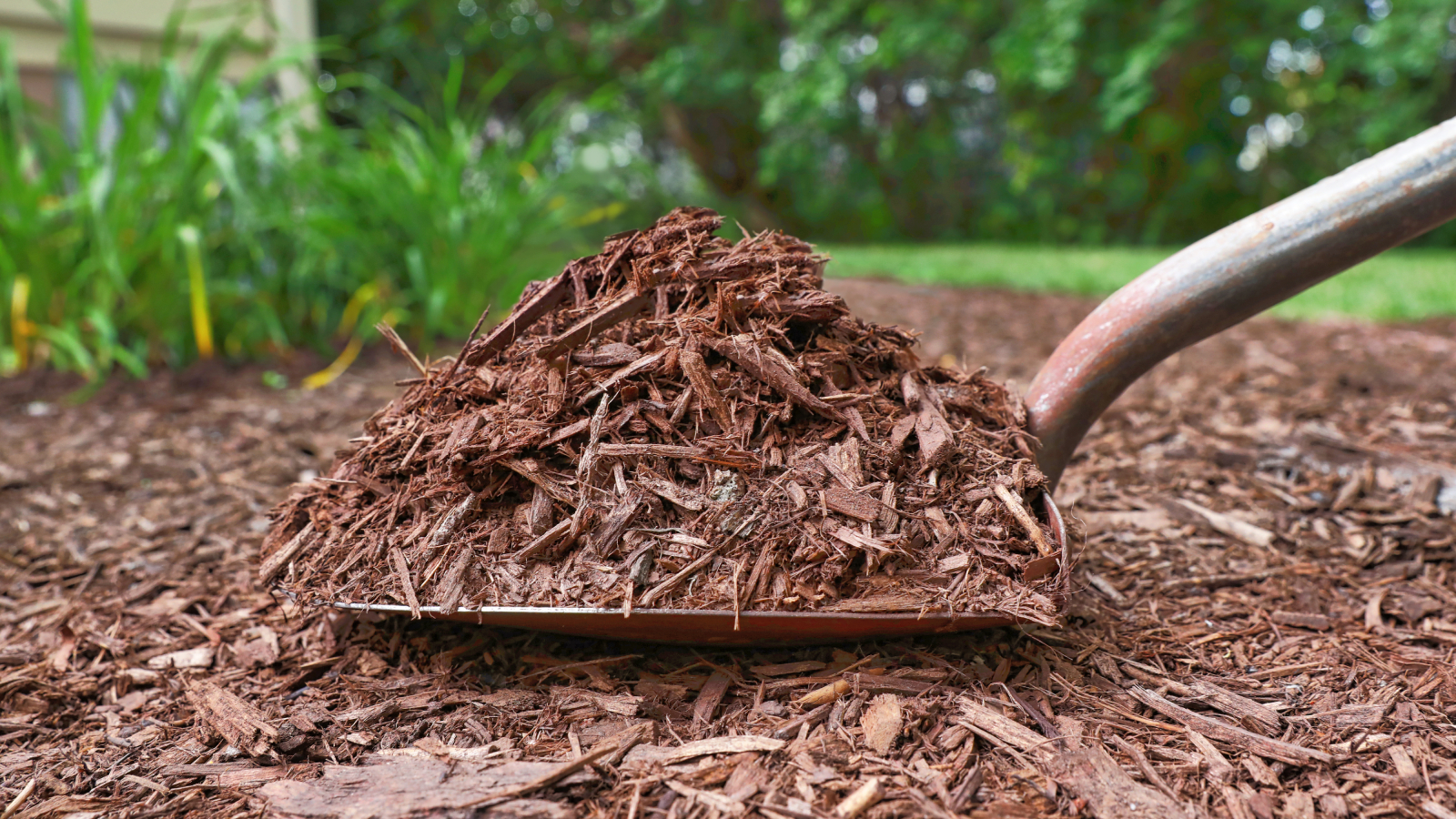

Kim Stoddart
Mulching is an important part of garden maintenance. Garden mulch cools plant roots, retards weeds and retains moisture. Landscape mulch is a surface addition versus an amendment that is added and dug into the soil. As such, landscaping mulch is also often used as simply an aesthetic application but it’s so much more. Keep reading to learn how the addition of mulch to your garden can help it perform at its peak and the various types of mulch available to the gardener.
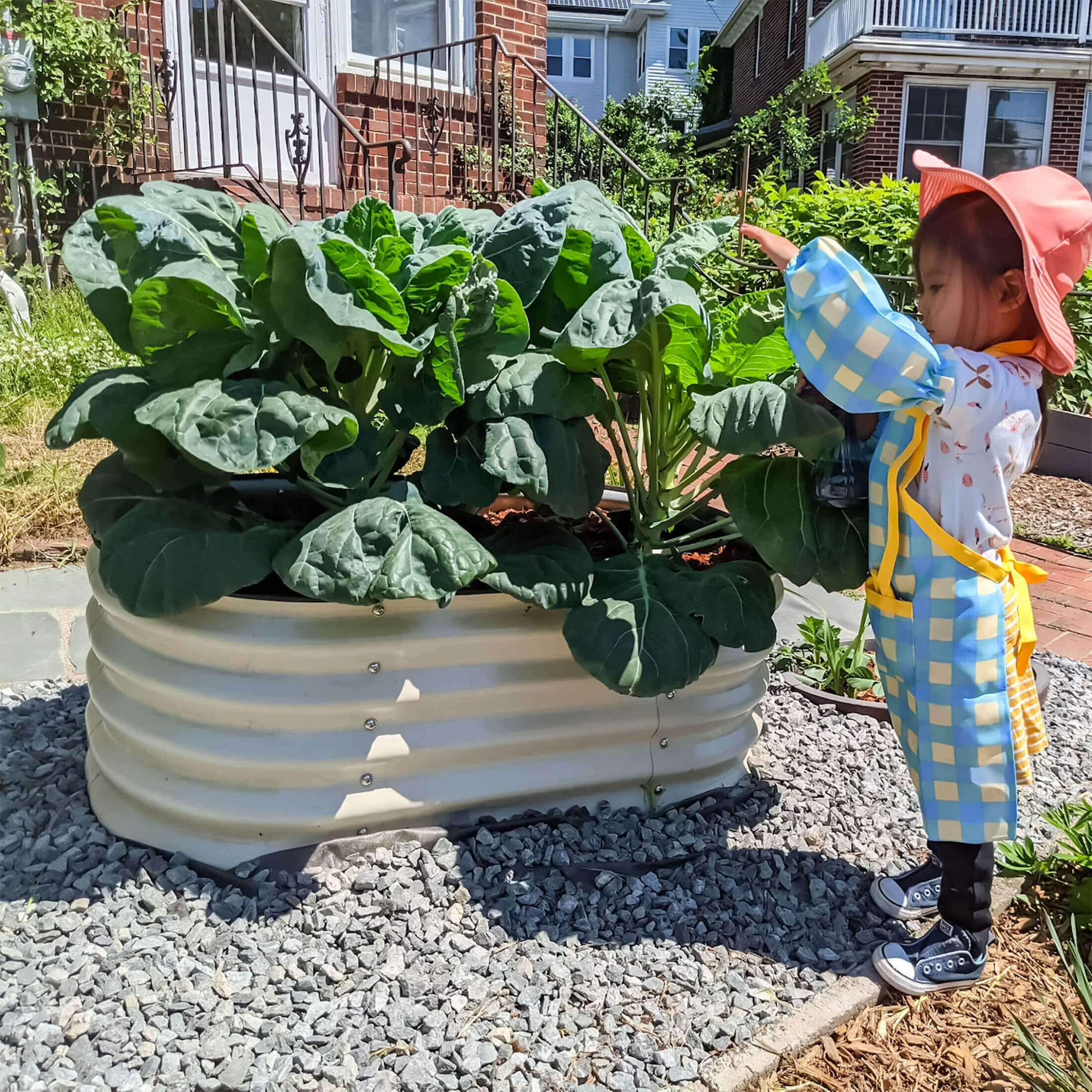
Encourage the love of gardening in your little ones! Not only is this bed is the perfect height for children to get involved in growing, but it is also a great small veggie bed for gardeners of all ages.
What Is Mulch?
Mulch is any of a variety of materials that are spread on the surface of the soil. Mulch may be natural or artificial and may be used in combinations or solely around plants and bedding areas.
Landscape mulch may be used as simply an ornamental like beauty bark or river rock, or do double duty as both an aesthetic material and one that has benefits to your plant life.
Benefits of Mulching
There are many benefits to mulching beyond beautification. Mulches help control weeds, conserve moisture, moderate soil temperatures, reduce soil erosion and protect produce and flowers from mud and puddles that can lead to rot and disease.
Mulch, of course, also provides a clean, attractive environment upon which to view the flowering and fruiting plants.
Award-winning eco-expert Kim Stoddart reveals 5 magic mulches that improve soil health and help the planet:
Types of Mulch
There are many types of mulch to choose, from organic to synthetic. Bark is likely one of the most common mulches used for both its attractive look and for its benefits suppressing weeds, protecting plant roots and foliage and retaining moisture around root systems.
Gardening tips, videos, info and more delivered right to your inbox!
Sign up for the Gardening Know How newsletter today and receive a free copy of our e-book "How to Grow Delicious Tomatoes".
Bark mulches can be bought in bulk or in bags in various sizes from finely shredded to large hunks that may be dyed or natural in color and made from a variety of wood. The best value here is to buy in bulk and spread yourself and choose cedar or cypress which are the slowest of the barks to decompose.
Grass clippings, leaves and pine needles can also be used as mulch and are often available from around your own landscape making them the most economical. Grass clippings work well on slopes to sop up water runoff. They also add in nitrogen where needed as do leaf mulches. Pine needles (or pine straw) also introduce nitrogen and are simple to apply without compaction.
Other organic mulches include arborist chips (or wood chip mulch), sawdust, evergreen boughs, some aged manures and even other plant materials. Plant material from clover and alfalfa to grass hay like Timothy, ryegrass or straw are also organic mulches.
All types of rock and gravel mulches are mineral or inorganic mulches. These include pebbles, stone chips, river rocks, lava stone and more.
Inorganic mulches may be plastic sheeting, landscape fabric, shredded tires or rubber mats.
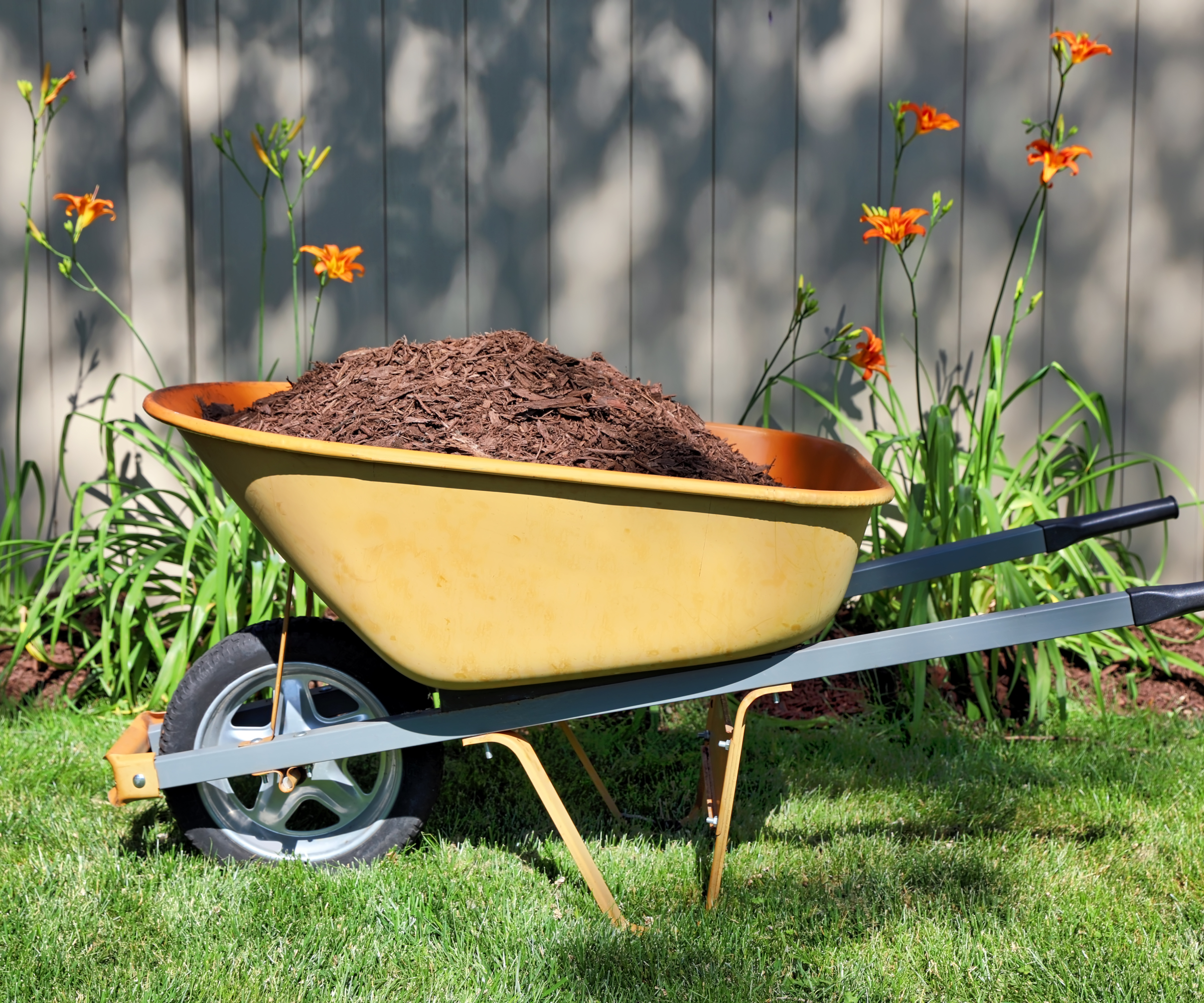
How Much Mulch Do I Need for My Landscape?
How much mulch you need for your landscape depends upon the type of material you use. Bark mulches, grass, leaves, sawdust and compost should be applied in a 2-3 inch (5-8 cm) layer.
Pine needles should be 3-4 inches (8-10 cm) thick and Timothy grass and straw about 6-8 inches (15-20 cm) thick.
The amount of mulch to use in your landscape depends on the density of your chosen mulch material. The smaller the particles, the less needed.
Mulch is generally sold in cubic feet. To determine how much mulch in cubic feet you will need, multiply the square footage you want mulched by the depth in feet, not inches and then divide by 27 since there are 27 cubic feet in a cubic yard.
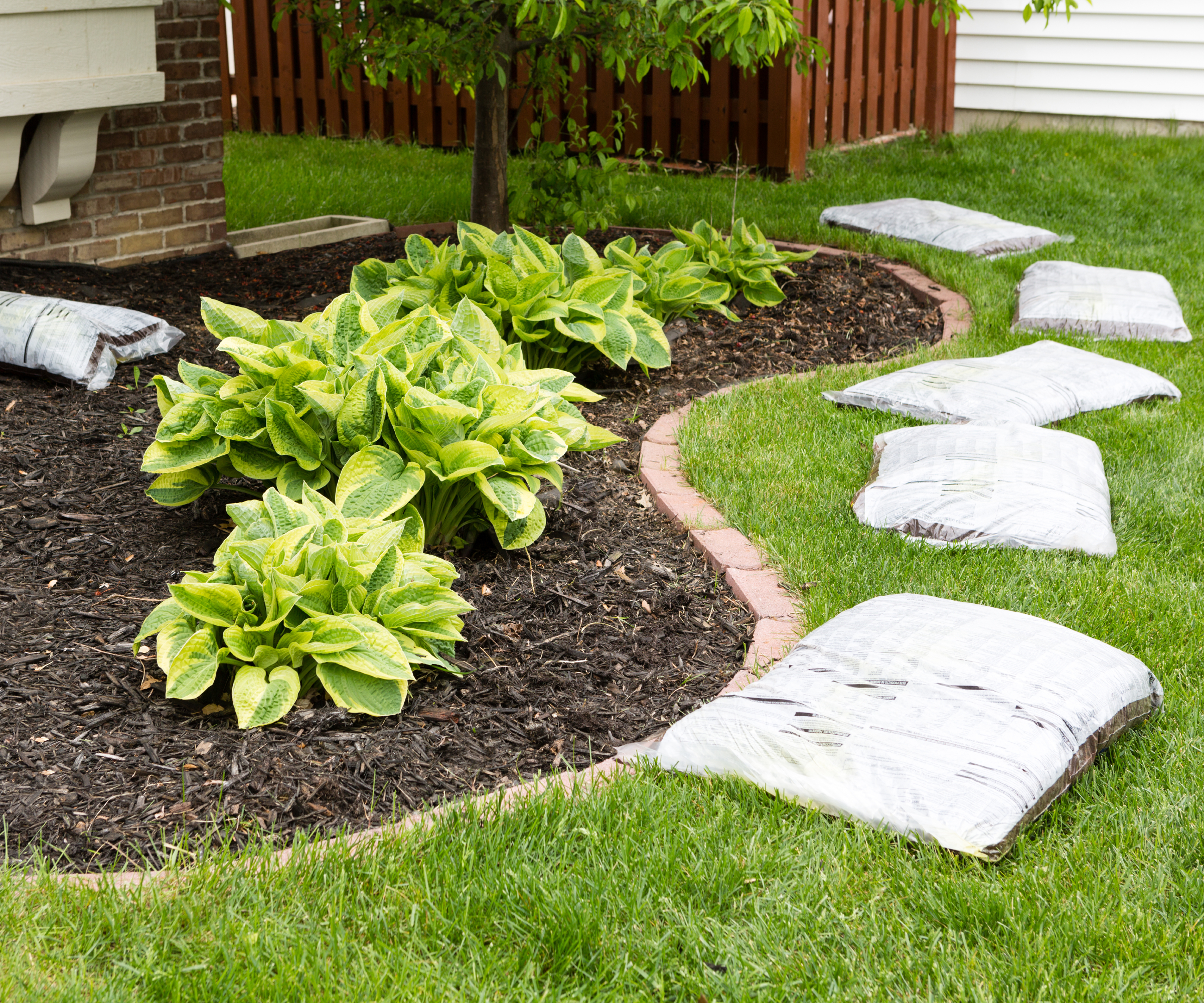
How to Mulch Your Garden
You can lay your mulch whenever you want, although most gardeners do so in the spring prior to planting and just before perennials emerge. Fall, as plants are going dormant, is another optimal time to mulch. Don’t mulch too early in the fall since doing so can keep them from going dormant opening them up to damage from freezing temperatures.
Prepare the area to be mulched by weed thoroughly. Then spread the mulch over the area you wish to be covered. A wheelbarrow, buckets, rake, and most importantly your hands are tools you will need to mulch the area.
Be sure to keep any mulch 2-3 inches (5-8 cm) away from the base of plants and trees to discourage disease. Mulch up to the drip line of the plant canopy.
Common Mulching Mistakes
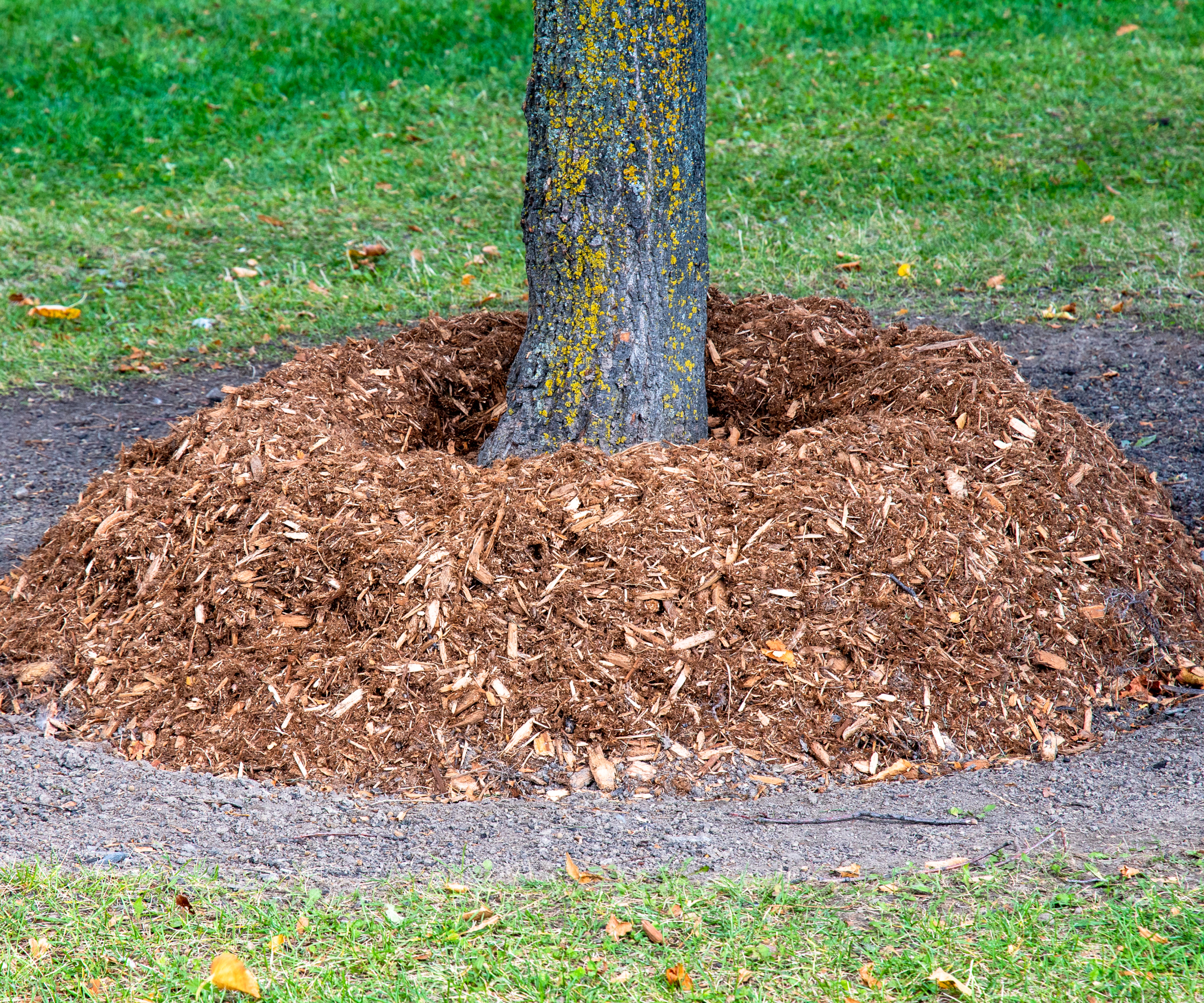
Mulching can be straightforward, but try to avoid these garden mulch problems:
- Don’t create a mulch “volcano" at the base of a plant. This will only encourage voles and other rodents in an area to shelter and eat which can girdle plants resulting in their death.
- Avoid using organic mulches over landscape fabric. They will decay or erode too quickly leaving an area ripe for weed growth. You should opt for mineral or inorganic mulches in this instance.
- Organic wood mulches can encourage colonies of carpenter ants and termites in your mulch. Carpenter ants nests can be treated but in the case of termites, it is best to keep these wood mulches several inches away from the home’s foundation.
- Fine mulches like sawdust or overly thick layers of organic mulch can contribute to a lack of oxygen and depletion of nitrogen. Generally you won’t need more than a depth of 2-4 inches (5-10 cm) to suppress weeds and retain moisture without compromising oxygen flow or nitrogen uptake.
- When oxygen is limited, mulch can become “sour”. This means the mulch ferments resulting in a variety of plant ailments including death. The smell of “sour” mulch is a tell tale sign something isn’t quite right. It smells strongly of vinegar. To keep mulch from souring, store it in small piles and turn the pile frequently.
- When mulching around edible plants, avoid using dyed wood chips which contain chromated copper arsenate or shredded rubber that also contains toxic chemicals that can leach from the mulch.

Grow a pizza garden this summer with this wonderful collection of seeds. This collection includes everything you need to grow delicious vegetables and herbs to compliment your cooking!
Frequently Asked Questions
Is mulching really necessary?
You don’t have to mulch but there’s no denying it has enormous benefits. It helps with soil compaction, retards weed growth, retains moisture, regulates soil temperature and can help reduce the incidence of disease on plants.
What is the disadvantage of mulching?
The disadvantages of mulching have more to do with when the mulch is improperly applied. That said, mulching can prevent some seeds from germinating, provides a cool sheltered area for slugs and snails, and can keep boggy areas wet for longer periods of time especially after heavy rainfall.
What type of mulch is best?
The type of mulch you choose depends upon your budget and what your foremost purpose for the mulch is. Some mulches are better for certain purposes than others. Some are more for aesthetic purposes and some are used to protect plants while still others fulfill both needs.
This article features products available from third-party vendors in the Gardening Know How Shop.

Bonnie Grant is a professional landscaper with a Certification in Urban Gardening. She has been gardening and writing for 15 years. A former professional chef, she has a passion for edible landscaping.
- Kim StoddartContent Contributor, Award-Winning Journalist, and Author